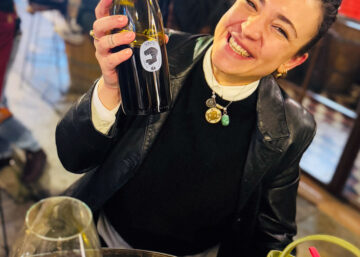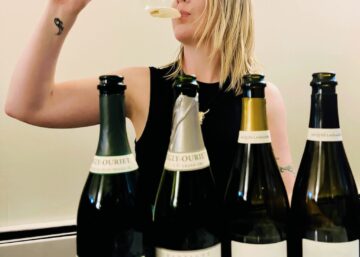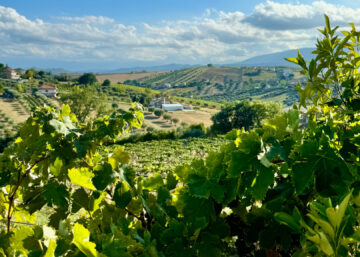“There’s a clear theme, but I’m not going to tell you what it is. As we taste, it should come to you,” Greg said as he poured the first three for our discernment.
Oh, how I love the blind!
Upon tasting the third, I guessed Champagne? Traditional Method? But after my certainty that #4 was no other than a flowery Prosecco, it hit us: Dosage!
Correct. Now on to what really matters.
Identifying the wine region is just a plus in the end. It’s fun to get it right, but it’s also extra difficult when it comes to sparkling wine. Your focus should be on method and overall quality. Is it traditional or tank? Acceptable? Outstanding?
Don’t forget what you actually need to assess and concentrate on that.
As I mentioned in my last post, the dosage lineup is an essential exercise for WSET D4 students. I cannot recommend it enough. Brave the seven bottles and better understand the EU sweetness levels in comparison to the WSET SAT sweetness scale.
Perception vs. Reality
That’s what it really comes down to. I will say, the SAT is a much more relevant method when considering sweetness in sparkling wine. “Extra-Dry” on the label is nearing the complete opposite when it comes to perceived sweetness. It makes me feel bad for the person who is staring at a sea of sameness on the shelf and looking for a bottle of dry sparkling wine.
“Oh! This says ‘Extra Dry’ right on the label, that’s perfect!”
And then they take a sip of very-present residual sugar…
So whether you’re a wine nerd that needs to know or just a wine lover that wants what they want, knowing this perception vs. reality chart should prove useful.
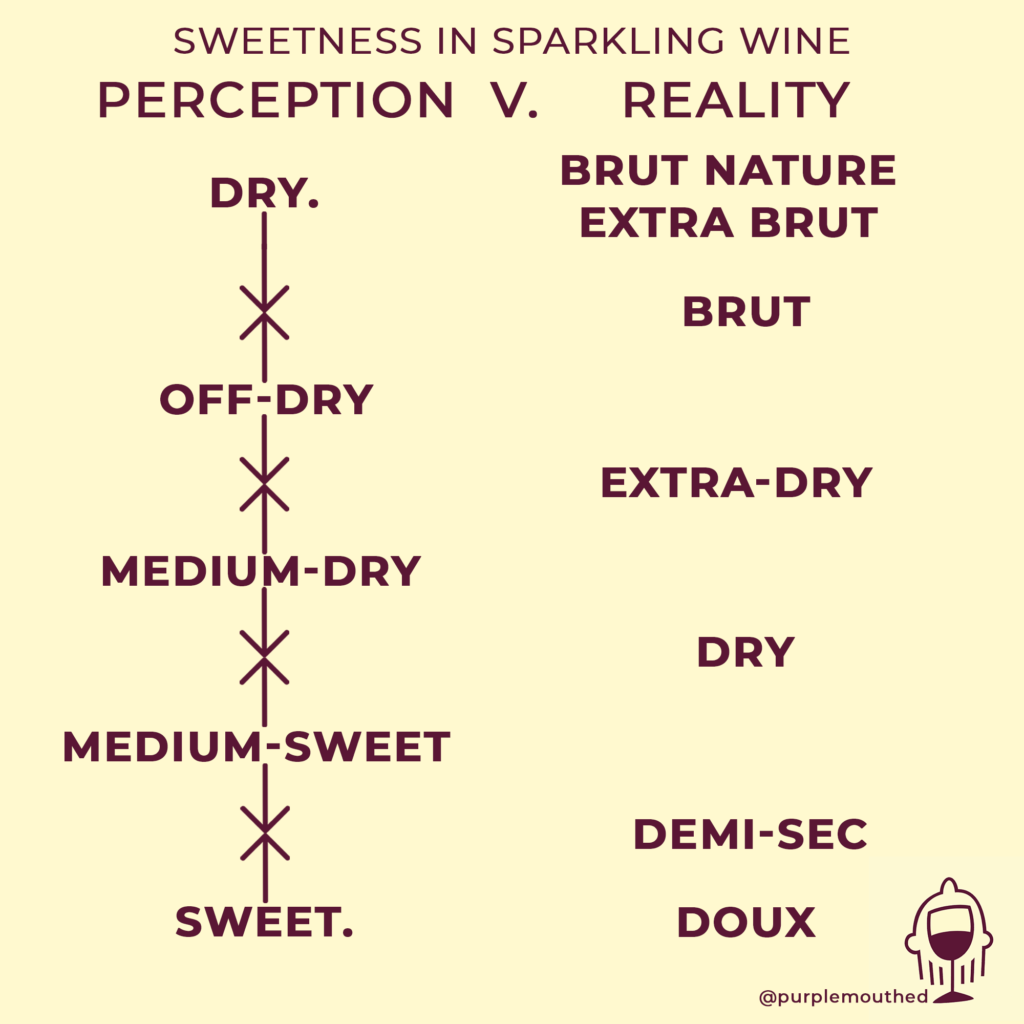
Basically, I simplified yesterday’s infographic to what the label says vs. what that actually means.
Now, onto the juice!
The first one had teeth-searing acidity, but I loved it from the very first sip.
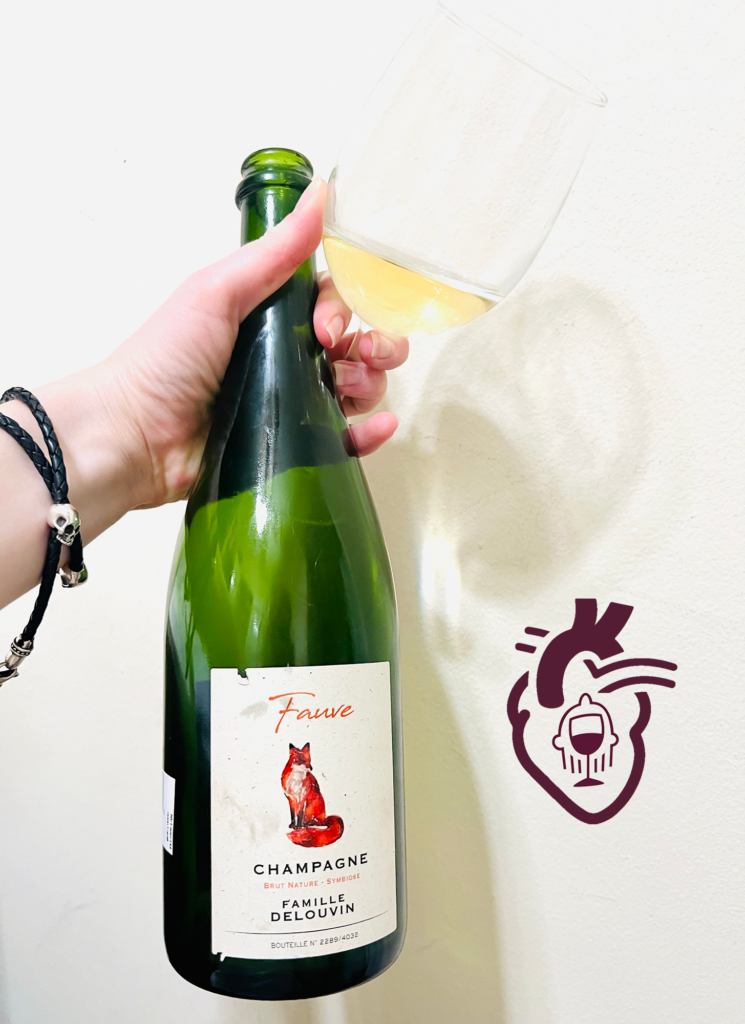
The Famille Delouvin Fauve Champagne is outstanding, a Purple Heart Award winner. Concentrated green fruit and a strong autolytic character take on the bone-dry dosage and bracing acidity to create an exciting balance. The wine is very much alive yet complex with developing tertiary notes such as soft caramel and ginger. Pronounced aromas and flavors give way to a long finish with a fine, persistent mousse.
Considering the acidity, concentration, and just-getting-started complexity, this bottle of bubbly is definitely suitable for aging.
I blinded it as a Brut Nature Vintage Champagne. Almost! Just got the vintage part wrong, but it had all the fixins for a fine Champagne. If you see a bottle, get one! I bet it’d be so good with Pommes Frites or rich, creamy cheeses.
Made by 10th generation winemaker, Geoffrey Delouvin, the Fauve Champagne is a 75% Chardonnay, 25% Pinot Meunier blend from Vandieres in the Marne Valley, where chalky soils and Pinot Meunier reign. Always known as the lesser of the trifecta, don’t discount the Meunier! It brings freshness and suppleness to a blend, and I’ve had several 100% varietals that made me swoon.
The wine was aged in stainless steel for six months, 60 months on the lees, and then six more months in the bottle before release. Malolactic was blocked and the acidity shows it! Zero dosage and very little SO2. Truly a Champagne worth trying!
Another outstanding bottle was the Veuve Clicquot Demi-Sec. Though I personally don’t like to drink anything above Extra Brut, objectively, this wine had it all.
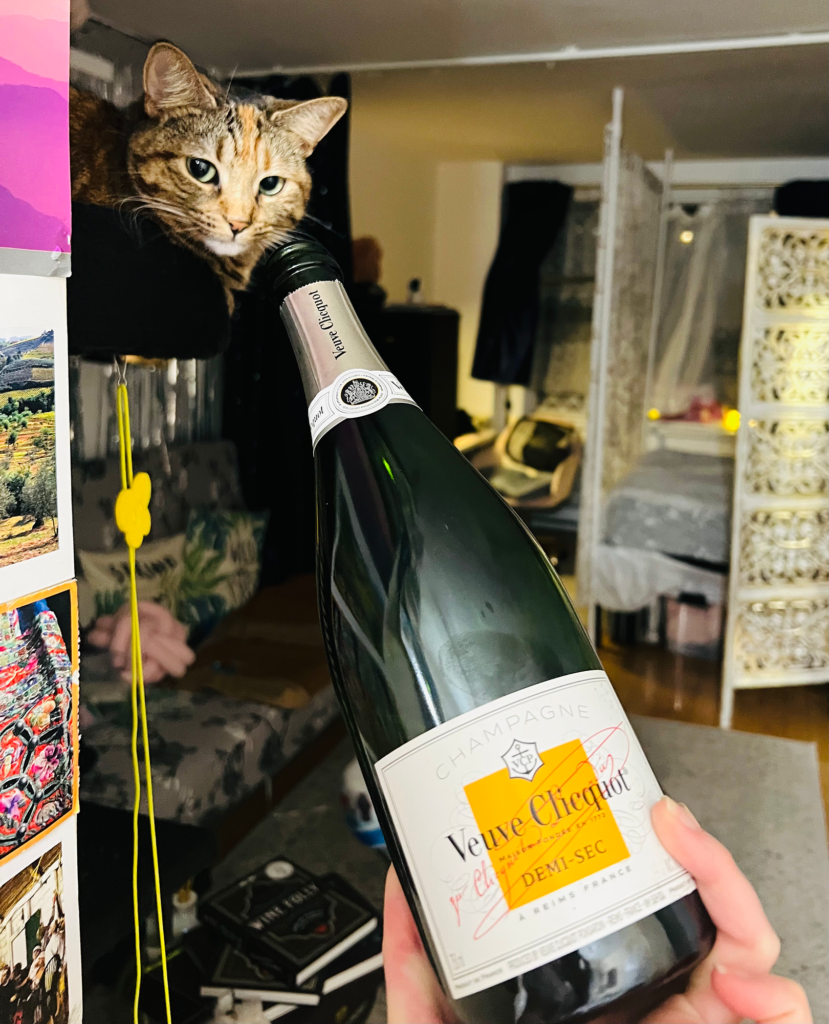
The nose was quite complex with medium (+) aromas of green apples, yellow flowers, honey, oranges, biscuit*, and banana bread.
*By the way, anytime I use “biscuit” to describe a wine, I’m being British and standardized. No warm, flaky bundles of joy awaiting butter, rather a cookie/cracker type thing.
So much silky, creamy mousse in the mouth with high acidity and a long finish with fine fizz. A well-made wine that could stand more time in the bottle. I know I was kinda hatin’ on Veuve the other day, but you can’t deny their quality. I just hate the price.
Send me a message if you’d like to do this exercise at home and I’ll be sure to send you the lineup plus a sheet for assessing sweetness!
